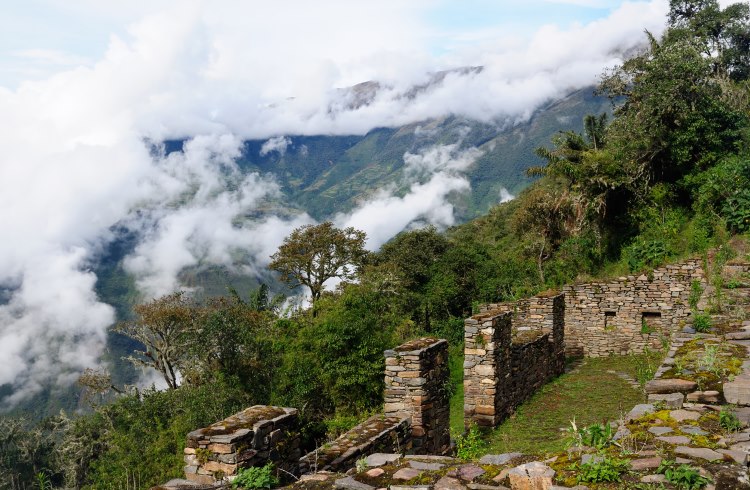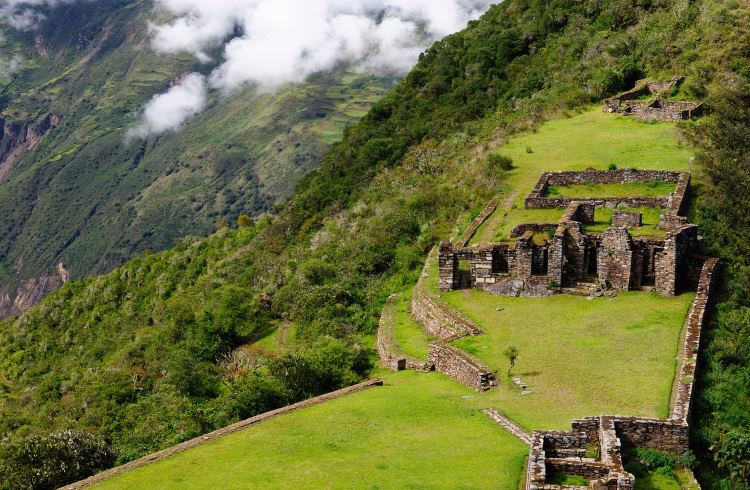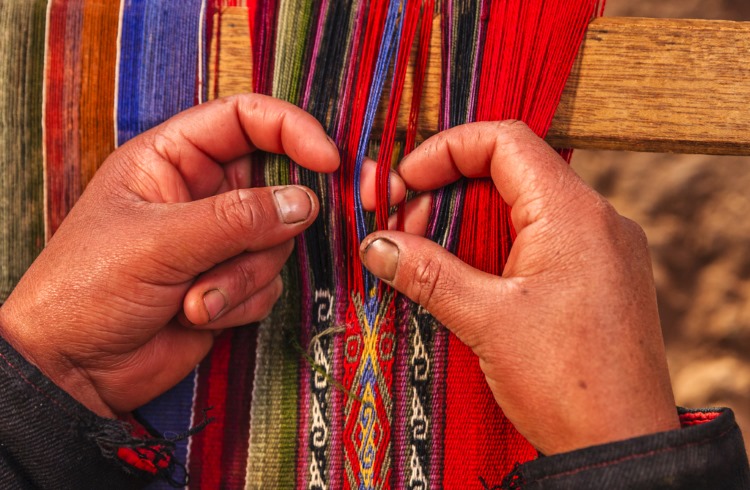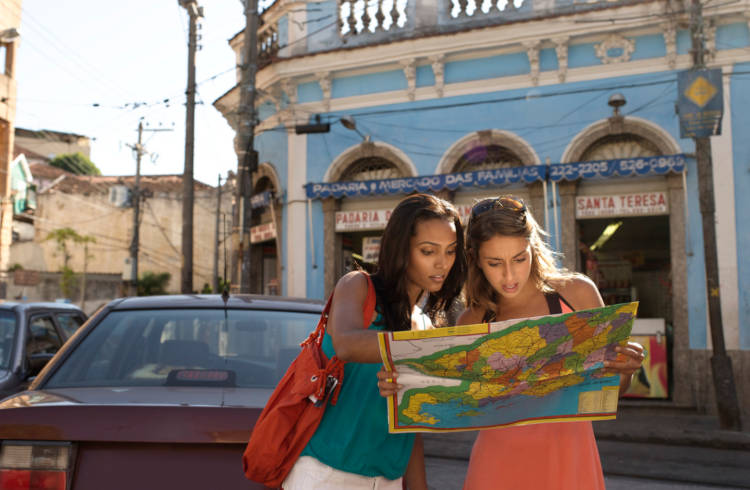Beyond Machu Picchu: Exploring Peru's Other Ancient Sites
No longer a "lost city," Machu Picchu is famous for a reason – but these ancient marvels are equally worthwhile, and get a fraction of the crowds.
 Photo © iStock/rchphoto
Photo © iStock/rchphoto
- Responsible travel in Peru
- Choquequirao
- Kuelap
- Chan Chan and other sites near Trujillo
- Chavín de Huántar
- More tips for traveling responsibly in Peru
Responsible travel in Peru
Machu Picchu is at the top of most travelers’ lists of destinations to visit in Peru. In fact, nearly one million people visited the UNESCO World Heritage site in 2022. But the most famous Incan ruins are starting to feel the wear and tear of mass tourism.
Fortunately, there are several lesser-known but highly worthwhile archeological sites in Peru that you don’t have share with with 2,500 other visitors.
Choquequirao
This is Peru’s second lost city – Hiram Bingham stumbled across it in 1909, two years before he found Machu Picchu. But because it requires a four-day trek to get there and back, more people visit Machu Picchu in a single day than visit Choquequirao in an entire year.
Currently, the only way to access Choquequirao is by foot, but the Peruvian government has announced plans to build a road and a cable car. The most common starting point in the village of Cachora, a four-hour bus ride from Cusco. To support the local economy, hire a local guide in Cachora rather than one in Cusco.
 The "lost city" of Choquequirao. Photo credit: iStock
The "lost city" of Choquequirao. Photo credit: iStockKuélap
Located in the region of Amazonas near the village of Tingo, Kuélap is another great alternative to Machu Picchu. The ruin was built around 800 AD by the Chachapoyas culture. Containing over 450 stone roundhouses and other structures, it was once home to some 3,500 people.
Just getting here used to be quite a journey, but flights now run from Lima to Jaén, which is about four to five hours by ground transportation from Kuélap. Accessing the site itself is easier now, too – Kuélap became the site of Peru’s first cable car in March 2017. Visitors can now reach the ruins on a 20-minute gondola ride from Nuevo Tingo.
 Kuélap. Photo credit: iStock
Kuélap. Photo credit: iStockChan Chan and other sites near Trujillo
Located on the northwestern coast of Peru, the city of Trujillo is within easy reach of multiple ancient marvels, including Chan Chan, Huaca del Sol, and Huaca de la Luna. While it lacks the natural splendor of the Sacred Valley, Trujillo’s ruins offer a glimpse of several pre-Columbian societies and some of the country’s more interesting and accessible archeological sites.
Chavín de Huántar
Another UNESCO World Heritage site well worth visiting, this complex of temples and terraces was built by the Chavín people around 900 BC. Despite being one of the oldest pre-Columbian sites in South America, it’s the work of a highly sophisticated culture, with a mysterious network of subterranean chambers and stonework richly carved with snakes, felines, and semi-human creatures.
Located east of the Cordillera Blanca, the site is best accessed from the city of Huaraz.
More tips for traveling responsibly in Peru
While Peru isn’t as overcrowded as some destinations, tourism is definitely on the increase. The Peruvian government raised its tourism budget by 15% in 2023, with much of the effort going towards showcasing alternantives to Machu Picchu.
To help reduce your own impact, hire local guides, buy directly from artisans, and find ways to minimize your environmental footprint.
Use less plastic
You can’t drink the tap water in Peru, but you can reduce the number of plastic bottles you throw away by buying water in bulk and refilling a reusable bottle. Many hotels will also offer a water dispenser in the lobby.
Find a volunteer opportunity in Peru
Several organizations offer short- and long-term volunteer opportunities and internships in Lima, Cusco, the Sacred Valley and the Amazon. Opportunities include community development, teaching English, and working with conservation initiatives. Volunteers can stay with local families or in shared flats with other volunteers. Make sure that organizations work closely with the local community and are responsive to local needs.
Support Peru’s local artisans
Peru’s handicrafts range from intricately carved gourds to warm alpaca sweaters. Whenever possible, visit artisans’ workshops and buy directly from them.
For ethically sourced handcrafts, check out these shops in Lima’s Barranco district: Dédalo, Artesanos Don Bosco, and Artesanías Las Pallas. In Cusco, visit the non-profit Centro de Textiles Tradicionales, where you can also see traditional weaving demonstrations. You’ll pay more, but the shops all work to ensure that artisans receive a fair price for their work.

Related articles
Simple and flexible travel insurance
You can buy at home or while traveling, and claim online from anywhere in the world. With 150+ adventure activities covered and 24/7 emergency assistance.
Get a quote

2 Comments
To avoid adding to the wasteful consumption of single-use water bottles, travel with a Sawyer filter and uv light. I spent 3 months in India and 6 weeks in Nicaragua and never bought water nor got sick. They are 100% effective in sanitizing tap or river water if used correctly. I’m happy to not use plastic water bottles, which developing countries end up burning to get rid of.
Excellent solution to the world wide plastic problem, Marie. I have traveled to Indo and South America with a Steripen Adventurer uv light and have filtered hundreds of liters of water with no problems. Good idea to carry a filter if hitting the trail or encounter turbid, murky water.